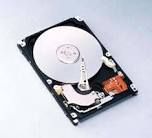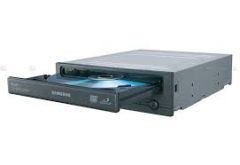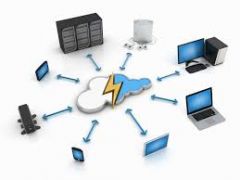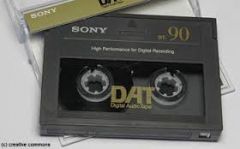![]()
![]()
![]()
Use LEFT and RIGHT arrow keys to navigate between flashcards;
Use UP and DOWN arrow keys to flip the card;
H to show hint;
A reads text to speech;
5 Cards in this Set
- Front
- Back

Magnetic disk
1. What is it? 2. How does it work? 3. Where it is used? 4. Pros and cons? |
Magnetic disk
1. It is the primary computer storage device. 2. It consists of a number of metal platters coated with a special magnetic material. The data is stored in this magnetic material - so it is a magnetic storage device. To access the data the platters spin thousands times/second and a magnetic read/write head floats above the surface of the platter. The disk surface is divided into tracks and the tracks in sectors. 3. Uses: - fixed hard disk ( storage the order of Terabytes) - floppy disk( stores up to 1.44 Mb) - Iomega Zip disk ( storage 100-750 Mb) - REV removable cartridge ( holds up to 70 Gb) 4. Pros: - cheap and can store large amounts of memory - reliable - can hold the data for many years Cons: - slower than solid state memory, but faster than external storage devices - moveable parts - mechanical reliability issues - data stored in 512 bytes chunks |
|

Optical disk
1. What is it? 2. How does it work? 3. Where it is used? 4. Pros and cons? |
Optical disk
1. Optical disks are optical storage devices. 2. Data is burned onto the surface of the disk using a laser beam in the CD/DVD drive. A laser beam is also used to read the data stored on the disk. 3. Uses: - CD - R/RW up to 700 Mb storage capacity - DVD - R/RW up to 8.4 Gb(double sided) - Blue Ray up to 50 Gb storage capacity 4. Pros: - relatively cheap and are massed produced - large storage for Blue Ray and DVDs - Blue Ray drivers can read DVDs, CDs and DVD drivers CDs Cons: - easily damaged by breaking or scratching - no single standard for DVDs - small storage capacity for CDs |
|

Flash memory
1. What is it? 2. How does it work? 3. Where it is used? 4. Pros and cons? |
Flash memory
1. It is a 'solid state' memory and a type of non-volatile storage. 2. Flash memory makes use of the electrical effects to store data. It is a 'solid state' technology because it is based on a silicon crystal slice and metal layers, so there are no moving parts. The flash memory is a non-volatile memory, so it holds its contents without a power supply present. 3. Uses: - memory sticks - jump drives - camera memory cards - solid state hard drives 4. Pros: - very fast - no moving parts so data accessed faster than HD or DVDs - very tough - it will not break when dropped or exposed to heat -very reliable - the data should be held for decades - compact - can store Gbytes in a small place Cons: - data can only be stored in chunks of 512-2048 bytes - fine for secondary storage but not as main memory like RAM or ROM - wear out over time - can be written roughly one million times |
|

Online storage
1. What is it? 2. How does it work? 3. Where it is used? 4. Pros and cons? |
Online storage
1. Storing your data online is becoming very popular. 2. You pay a monthly fee to an online data storage company and you are able to upload your documents and files in the storage space assigned to you. The online storage systems have hundreds of data servers. A client sends copies of files over the Internet to the data server, which then records the information. When the client wishes to retrieve the information, he/she accesses the data server through a Web-based interface. 3. Uses: - companies like Xdrive, MediaMax and Strongspace offer storage space for any kind of digital data - Google Docs allows users to upload documents, spreadsheets and presentations - YouTube hosts millions of user-uploaded files 4. Pros: - You could automatically back up your data - Peace of mind – having a copy of your data online means that you can quickly recover it - Can access the files from anywhere Cons: - reliability and security issues |
|

Magnetic tape
1. What is it? 2. How does it work? 3. Where it is used? 4. Pros and cons? |
Magnetic tape
1. A way of storing large amounts of information by recording magnetically. 2. The tape consists of a thin plastic base material, with a coating of ferric oxide powder. This oxide is a ferromagnetic material, meaning that if you expose it to a magnetic field it is permanently magnetized by the field. In this way you can record data and erase the tape and re-record it again. 3. Uses: - large organizations that need to back up large amounts of data each day. Due to the serial access which can be slow, the magnetic tape are suitable for archiving the data rather than fast access to that data. 4. Pros: - the cheapest form of storage per megabyte of storage - can store large amounts of data - up to 1 Terabyte Cons: - slow due to serial access - can take a log time to rewind to the desired data - the data may be corrupted if close to a strong magnetic field such as large speaker or magnet - need special equipment to record/read |

